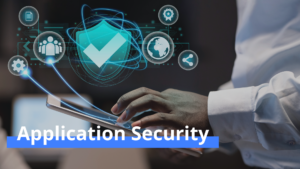









Did you do your “auth” well? This is a question that many developers may find themselves pondering. In the rapidly evolving landscape of software development, one critical component of any secure system often overlooked or not fully understood is authentication and authorization. In this article, we will explore how important proper training application security in authentication and authorization is, and the best practices and solutions that can help with these issues.
A concerning trend highlighted by studies, such as the one conducted by TechRepublic, reveals that many developers do not view application security as a top priority. So, what are the reasons?
In software development, inadequate authentication and authorization practices stem from a lack of comprehensive training. Traditional educational institutions and coding bootcamps often prioritize high-level security concepts. They tend to overlook the finer details of authentication and authorization. Many educational programs focus on equipping developers with skills for creating functional applications that meet business requirements. However, they frequently sideline security and compliance essentials.
In the absence of appropriate training, developers may not fully grasp the significance of robust security measures or how to implement them effectively. Consequently, this inadequacy can manifest in software systems characterized by vulnerabilities, ultimately putting user data at risk of compromise.
Learn more: Data Security in the Cloud: Cybersecurity for Cloud-Based Businesses
Many online resources and open-source projects encourage developers to create their own authentication solutions. However, they often lack guidance on implementing proper authorization. Some guides endorse storing user credentials in databases. They may even advocate for weak hashing methods or, in alarming cases, storing passwords in plain text. Authorization’s importance is often downplayed. Some resources prioritize standard authentication behind paywalls, limiting access to crucial information.

Rolling one’s own authentication requires a deep understanding of security best practices and potential vulnerabilities. Without this knowledge, developers might create insecure systems open to exploitation. Additionally, the lack of guidance on authorization implementation leaves developers unsure how to restrict access effectively. This uncertainty can lead to unauthorized access and potential data breaches. Therefore, developers must actively seek comprehensive guidelines and adhere to best practices in authentication and authorization to safeguard their systems’ security.
The landscape of authentication and authorization in the digital world has grown increasingly intricate due to evolving security requirements. Emerging necessities such as Multi-Factor Authentication (MFA) and the move away from traditional password-based systems have redefined the playing field. Many of the older password hashing functions have become obsolete or require extensive configuration to maintain security, and yet some continue to be defaults on major systems like WordPress and Drupal. Best practices today demand MFA, although the choice of the second factor varies widely. Some established methods, like SMS OTP and email notifications, are still in use but are no longer recommended due to vulnerabilities. Meanwhile, newer and less-adopted technologies like WebAuthn are gaining traction. Moreover, innovative solutions like passkeys represent a paradigm shift. They depart from the traditional username and password model, ushering in a new era of secure digital access.
Fortunately, there are now well-established standards for authentication and authorization. These standards make life easier for developers and enhance security across the digital landscape. OpenID Connect and OAuth 2 have emerged as the go-to standards adopted by a multitude of medium to large international companies. These standards offer mature user experiences and impeccably designed workflows that cater to a wide array of environments. With robust authentication mechanisms and streamlined authorization processes, these standards have become the backbone of modern identity management.
Additionally, authorization approaches such as Role-Based Access Control (RBAC) and Attribute-Based Access Control (ABAC) aren’t universally standardized. However, many systems and applications widely embrace them. Developers have access to numerous proprietary and open-source solutions. These solutions have substantial user bases, mature products, and accessible documentation. Recognized names such as Auth0 and Ping Identity offer powerful tools and comprehensive documentation. Consequently, they are the preferred choice for numerous prominent enterprises. Simultaneously, open-source alternatives like Keycloak and Authelia have gained popularity for their robust feature sets and well-documented capabilities. Furthermore, major frameworks such as .NET and Spring have built-in support for OpenID Connect and OAuth 2. They provide developers with a wealth of options and reducing the need to reinvent the wheel when implementing authentication and authorization systems. This array of choices empowers developers to select the most suitable solution for their specific needs, saving valuable time and ensuring robust security measures.
Learn more: Shielding Your Apps: Secure Mobile App Development for Uncompromised User Data
Authentication and authorization are integral components of secure software development. While the lack of training and awareness has led to vulnerabilities in many applications, the landscape is evolving with new standards and solutions. Developers should prioritize security, adopt best practices, and leverage available tools to protect their applications and users.
At ITC, as an ISO 27001:2013 certified company with extensive experience and knowledge in building secure products, we are well-equipped to help companies navigate these challenges and deliver secure solutions. With our expertise in popular tools like Azure AD, AWS Cognito, and Keycloak, we have successfully delivered products for numerous companies, including Selz, UpDiagram, ACB, FE Credit and are committed to ensuring the highest level of security for your projects.
Stay ahead in a rapidly changing world with our monthly look at the critical challenges confronting businesses on a global scale, sent straight to your inbox.